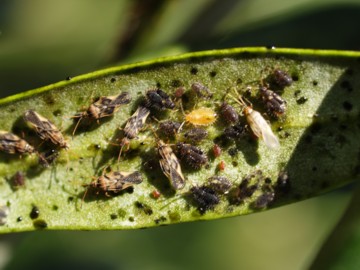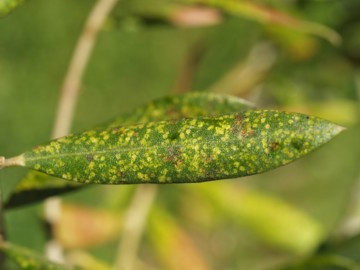Pests & Diseases » Olive Lace Bug
Olive Lace Bug (Froggattia olivinia) is a serious pest of olives. Heavy infestations can cause loss of vigour, severe defoliation and reduced fruit yield. The bugs are sap-sucking insects that feed on the underside of the leaf causing a yellow mottling of the leaf surface which usually turns brown and eventually drops.
The olive lace bug can have numerous generations per year depending on the climate. New infestations can occur regularly throughout the growing season. Eggs that have overwintered on the tree usually begin to hatch out in spring or late winter.
Management
Monitor the trees in early spring for evidence of insect infestation. Apply insecticide treatments soon after lace bug activity is first noticed. Lace bug populations can build up rapidly if left unchecked. A follow-up spray is required 10 to 14 days after the first application to kill the young nymphs that emerge from eggs after the first spray was applied.
Three insecticides have been registered in the past with "off label permits" for the control of lace bug on olives in Australia: Dimethoate (Rogor) rate: 0.75g/L, Fenthion (Lebaycid) rate: 0.75g/L. Rates may vary depending on product concentration- refer to label for details. Py-Bo and other natural or synthetic pyrethrum products can also be used to control olive lace bug.
Please note: it is a legal requirement that label instructions are followed, if olives are not listed on the label of the pesticide, it is either not registered for use on olives or an off label permit is required.
Pesticide registrations and off-label permits for olives can be viewed and downloaded from the Australian Pesticides & Veterinary Medicines Authority website: APVMA (click on search for a permit tab then enter olive under the crop section). Permits can also be checked at the AOA Website











